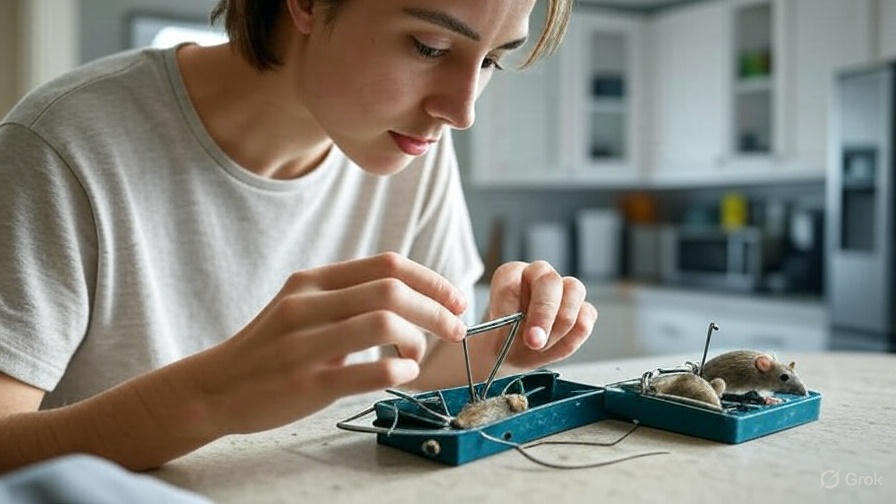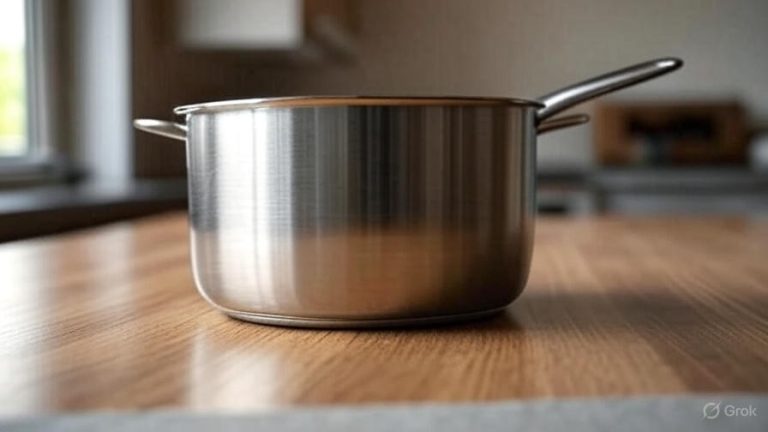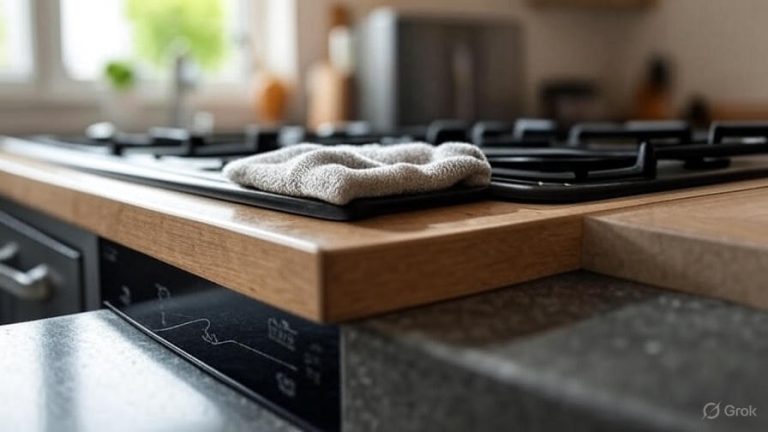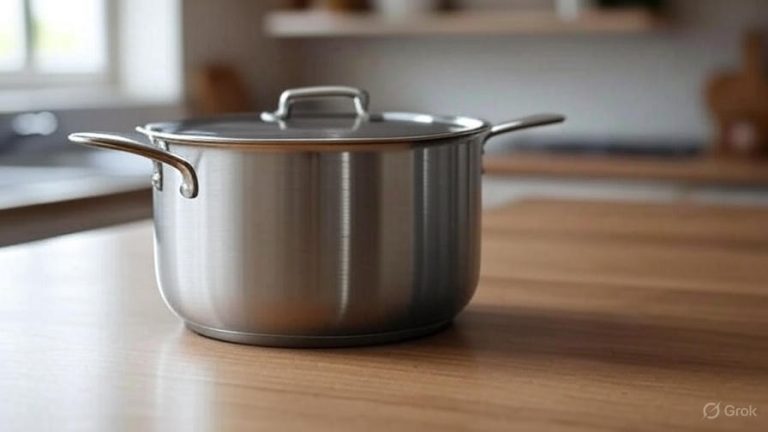How to Get Rid of Mice in Kitchen?
Finding mice in your kitchen can turn your peaceful morning coffee routine into a nightmare. These tiny rodents don’t just contaminate your food – they spread diseases, chew through packaging, and leave behind unpleasant droppings that make your cooking space unsanitary. If you’ve spotted mouse droppings near your pantry or heard scratching sounds behind your cabinets, you need to act fast.
Getting rid of kitchen mice requires a strategic approach that combines immediate removal tactics with long-term prevention methods. This comprehensive guide will walk you through proven techniques that eliminate current infestations and keep these unwanted guests from returning.
Why Mice Love Your Kitchen
Your kitchen provides everything mice need to survive and thrive. Food sources abound in pantries, cabinets, and even small crumbs scattered across countertops. Mice can squeeze through openings as small as a dime, making it easy for them to access your cooking area through cracks around pipes, gaps under doors, or holes in walls.
Water sources also attract these rodents. Leaky faucets, pet water bowls, and condensation around appliances create the moisture mice need. The warmth generated by ovens, dishwashers, and refrigerators makes your kitchen an ideal nesting location during colder months.
Mice reproduce rapidly, with females capable of producing up to 10 litters per year. A small problem can quickly escalate into a major infestation if left untreated. Early intervention prevents costly damage and reduces health risks associated with rodent-borne illnesses.
Signs You Have a Mouse Problem
Recognizing the early warning signs helps you address infestations before they spiral out of control. Mouse droppings are typically the first indicator most homeowners notice. These small, dark pellets appear near food sources, along baseboards, and inside cabinets where mice travel regularly.
Gnaw marks on food packaging, wooden cabinets, or plastic containers indicate active mouse activity. Mice have continuously growing teeth and must chew constantly to keep them from becoming too long. You might find torn bags of flour, cereal boxes with small holes, or chewed corners on cardboard packaging.
Strange noises coming from walls, cabinets, or ceiling spaces often signal mouse movement. These sounds typically occur at night when mice are most active. Scratching, scurrying, or squeaking noises suggest rodents are traveling through your home’s structure.
A musty, ammonia-like odor can develop in areas with heavy mouse activity. This smell comes from mouse urine and becomes more noticeable as infestations grow larger. You might also notice grease marks along walls where mice frequently travel, leaving behind oils from their fur.
Natural Mouse Deterrents That Actually Work
Many homeowners prefer natural methods to eliminate mice without using harsh chemicals around food preparation areas. Peppermint oil serves as an effective deterrent because mice dislike its strong scent. Soak cotton balls in pure peppermint oil and place them near entry points, inside cabinets, and around areas where you’ve noticed mouse activity.
Steel wool creates an excellent barrier material that mice cannot chew through. Stuff steel wool into small gaps around pipes, cracks in walls, and spaces under appliances. The sharp fibers discourage mice from attempting to gnaw through these blocked pathways.
Ultrasonic devices emit high-frequency sounds that supposedly repel rodents. However, research shows mixed results with these products. Some mice may initially avoid areas with ultrasonic devices, but they often become accustomed to the sounds over time.
Coffee grounds scattered around potential entry points may deter some mice due to their strong aroma. Used grounds work just as well as fresh ones, making this an economical option for budget-conscious homeowners. Replace the grounds regularly to maintain their effectiveness.
Cayenne pepper sprinkled along mouse pathways can discourage rodents from traveling through treated areas. The spicy capsaicin irritates their sensitive noses and paws. However, this method requires frequent reapplication and may not provide complete control over established infestations.
Effective Trapping Strategies
Snap traps remain one of the most reliable methods for eliminating mice quickly. These traditional traps kill rodents instantly when properly set, preventing suffering while providing immediate results. Place snap traps along walls where mice typically travel, positioning them perpendicular to the wall with the trigger end facing the baseboard.
Bait selection plays a crucial role in trapping success. Contrary to popular belief, cheese isn’t always the best option. Peanut butter, chocolate, dried fruit, or small pieces of bacon often prove more attractive to hungry mice. The bait should be sticky enough to force mice to work at removing it, increasing the likelihood of triggering the trap mechanism.
Live traps offer a humane alternative for homeowners who prefer not to kill mice. These cage-style traps capture rodents alive, allowing you to relocate them far from your home. However, live trapping requires prompt attention since captured mice can become stressed or injured if left in traps too long.
Glue traps provide another option, though many consider them inhumane since mice may struggle for hours before dying. These sticky boards work best in areas where snap traps might be inappropriate, such as tight spaces or locations where children or pets might access traditional traps.
Strategic trap placement maximizes your success rate. Set multiple traps in areas with the heaviest mouse activity, spacing them every few feet along walls. Check traps daily and reset them immediately after catching mice. Dead rodents in traps can actually attract more mice to the area.
Professional-Grade Bait Stations
Bait stations offer a secure method for controlling mouse populations while protecting children and pets from accidental poisoning. These locked containers hold rodenticide baits that mice can access through small openings designed specifically for their size.
Tamper-resistant stations meet strict safety standards required for residential use. The locking mechanisms prevent unauthorized access while allowing mice to enter freely. Station designs also prevent bait from spilling or being removed by non-target animals.
Rodenticide baits come in various formulations, including blocks, pellets, and soft baits. Anticoagulant baits work by preventing blood clotting, causing internal bleeding that leads to death over several days. This delayed action prevents mice from associating the bait with illness, encouraging continued feeding.
Place bait stations along walls where mice travel frequently, but keep them away from food preparation areas. Stations work best when positioned between nesting areas and food sources, intercepting mice during their regular foraging trips.
Monitor stations regularly to ensure adequate bait remains available. Replace consumed bait promptly to maintain control pressure on the mouse population. Some baits may lose effectiveness over time due to moisture or temperature changes.
Sealing Entry Points
Preventing mice from entering your kitchen requires a thorough inspection of potential access routes. Start by examining areas around plumbing pipes, electrical conduits, and gas lines where they pass through walls or floors. Even tiny gaps can provide entry points for determined rodents.
Door and window seals often deteriorate over time, creating gaps large enough for mice to squeeze through. Install door sweeps on exterior doors and replace worn weatherstripping around windows. Pay special attention to garage doors, which frequently develop gaps at the bottom.
Cracks in foundations, walls, or around window frames need immediate attention. Use caulk, expanding foam, or concrete patching compound to seal these openings. For larger gaps, install hardware cloth or metal flashing before applying sealant materials.
Ventilation systems can provide highways for mouse movement throughout your home. Install fine mesh screens over vent openings while ensuring adequate airflow for proper ventilation. Dryer vents are particularly vulnerable since the warm air attracts rodents seeking shelter.
Regular maintenance prevents new entry points from developing. Inspect your home’s exterior quarterly, looking for damage caused by weather, settling, or other factors that might create mouse access routes. Prompt repairs save time and money compared to dealing with established infestations.
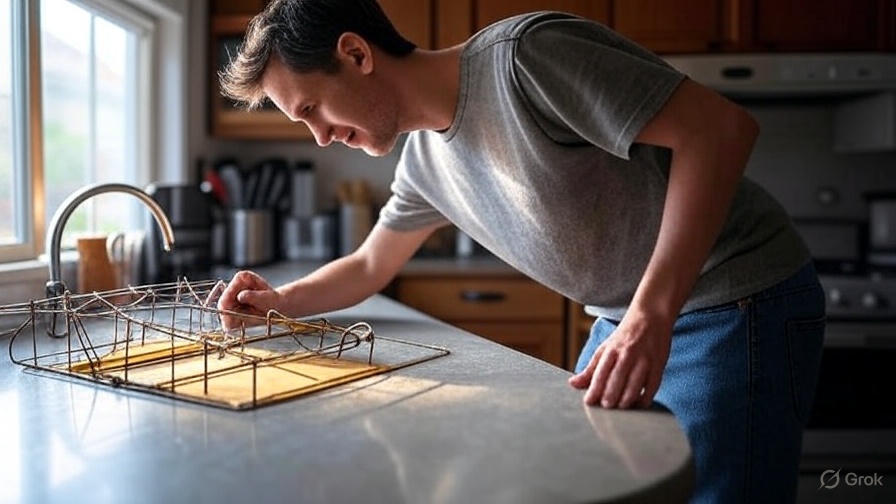
Sanitation and Food Storage
Proper food storage eliminates the primary attraction that draws mice to kitchens. Transfer dry goods like cereals, flour, rice, and pasta from their original packaging into airtight containers made of glass, metal, or thick plastic. Mice can easily chew through cardboard boxes and thin plastic bags.
Clean up crumbs and spills immediately after cooking or eating. Mice can survive on surprisingly small amounts of food, so even tiny crumbs provide sustenance. Sweep and mop kitchen floors regularly, paying attention to areas under appliances and inside cabinets.
Store pet food in sealed containers and avoid leaving food bowls out overnight. Pet food attracts mice just as readily as human food, and the constant availability makes your home particularly appealing to rodents. Feed pets only what they can consume in one sitting when possible.
Keep garbage cans tightly sealed and empty them frequently. Food scraps in trash containers provide easy meals for hungry mice. Use cans with tight-fitting lids and consider storing them in sealed pantries or garages if mice problems persist.
Regularly inspect stored food items for signs of rodent damage. Discard any packages with gnaw marks, holes, or contamination. The cost of replacing damaged food is minimal compared to the health risks associated with consuming contaminated products.
Kitchen-Specific Prevention Tips
Appliance maintenance plays a crucial role in mouse prevention. Clean behind and under refrigerators, stoves, and dishwashers regularly to remove food debris that accumulates in these hidden areas. These warm, dark spaces often become preferred nesting sites for mice.
Cabinet organization helps eliminate hiding spots and makes it easier to spot mouse activity. Avoid storing items directly on cabinet floors, instead using shelves or containers that elevate materials. This practice also makes cleaning more thorough and effective.
Pipe insulation prevents condensation that creates water sources for mice. Wrap cold water pipes with foam insulation to reduce moisture buildup. Fix leaky faucets promptly and ensure proper ventilation around dishwashers and other appliances that generate steam.
Counter cleanliness requires attention to details that might seem insignificant. Wipe down surfaces with disinfectant cleaners that remove food residues and scent trails mice use for navigation. Don’t forget to clean inside small appliances like toasters and coffee makers where crumbs accumulate.
Storage area management involves organizing pantries and cabinets to maximize visibility and minimize hiding spots. Use clear containers whenever possible to easily identify contents and spot potential problems. Rotate stored items regularly to ensure older products get used before they attract pests.
When to Call Professional Exterminators
Large infestations often require professional intervention to achieve complete control. If you continue finding new droppings, hearing activity, or discovering damage despite your best efforts, it’s time to contact pest control experts. Professionals have access to more powerful tools and techniques than typical homeowners.
Multiple entry points can overwhelm DIY efforts, especially in older homes with numerous potential access routes. Professional exterminators can identify and seal entry points you might miss while implementing comprehensive treatment programs tailored to your specific situation.
Health concerns may necessitate professional treatment, particularly if family members have compromised immune systems or respiratory conditions. Professionals use safer application methods and can recommend appropriate precautions during treatment processes.
Recurring problems suggest underlying issues that require expert diagnosis. If mice return repeatedly after apparently successful elimination efforts, professionals can identify attractants or entry points that continue enabling infestations.
Time constraints make professional services valuable for busy homeowners who lack the time for thorough DIY approaches. Exterminators can implement comprehensive programs quickly while providing ongoing monitoring and maintenance services.
Maintaining a Mouse-Free Kitchen
Regular inspections help catch problems before they become serious infestations. Schedule monthly checks of potential entry points, storage areas, and appliance spaces. Look for new droppings, gnaw marks, or other signs of rodent activity.
Seasonal preparations address changing conditions that might attract mice. Before winter arrives, inspect and seal potential entry points while removing outdoor attractants like fallen fruit or accessible compost piles. Spring cleaning should include thorough inspections of storage areas and deep cleaning of appliance spaces.
Documentation helps track patterns and improve prevention efforts. Keep records of where you find signs of mouse activity, which control methods work best, and when problems tend to occur. This information helps you anticipate and prevent future issues.
Neighbor cooperation can enhance control efforts in attached housing situations. If you live in apartments, condominiums, or townhouses, coordinate with neighbors to address mouse problems comprehensively. Mice easily move between connected units, making isolated treatment efforts less effective.
Ongoing vigilance remains essential even after successfully eliminating current infestations. Mice are persistent creatures that continuously search for new food sources and shelter. Maintaining good sanitation practices and prompt attention to potential problems prevents minor issues from becoming major headaches.
Conclusion
Eliminating mice from your kitchen requires patience, persistence, and a comprehensive approach that addresses both current infestations and future prevention. Start with immediate control measures like trapping and baiting while simultaneously implementing long-term solutions such as entry point sealing and improved sanitation practices.
Success depends on consistency in applying multiple control methods rather than relying on any single approach. Natural deterrents work best when combined with physical barriers and proper food storage techniques. Professional assistance becomes valuable when DIY efforts fail to provide complete control or when infestations are particularly large or persistent.
Remember that mouse control is an ongoing process rather than a one-time fix. Regular maintenance, vigilant monitoring, and prompt attention to new problems will keep your kitchen mouse-free and your family safe from the health risks associated with rodent infestations. The time and effort invested in comprehensive mouse control pays dividends in protecting your home, food, and peace of mind.

